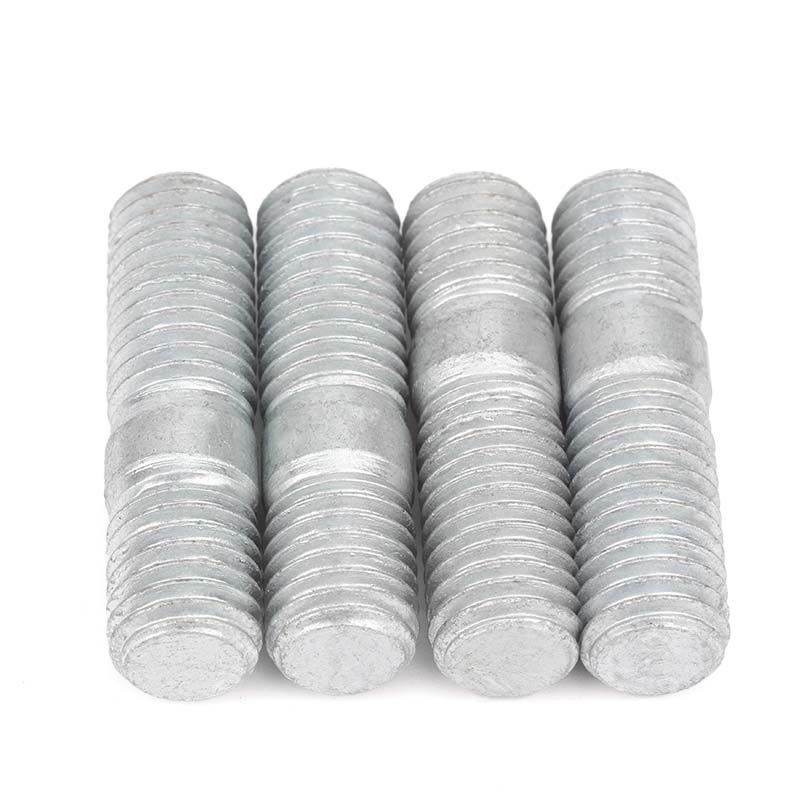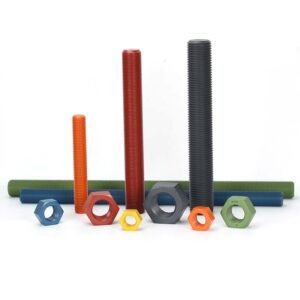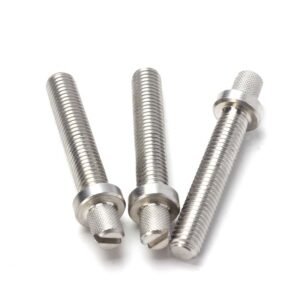Hot-Dip Galvanizing for Carbon Steel Fasteners
Hot-Dip Galvanizing for Carbon Steel Fasteners
Hot-dip galvanizing is an essential surface treatment method widely applied in the fastener industry, especially for carbon steel materials. As corrosion resistance is a critical factor for durable fasteners, hot-dip galvanizing has become one of the most effective and economical solutions available today.
Overview of Hot-Dip Galvanizing
Definition
Hot-dip galvanizing involves immersing cleaned carbon steel fasteners into a bath of molten zinc. The high-temperature process (typically around 450°C / 840°F) facilitates a metallurgical reaction, wherein a zinc-iron alloy layer forms on the steel surface, topped by a layer of pure zinc. This layered coating provides robust and long-lasting corrosion protection.
Technical Background
The technique dates back over 150 years, with its adoption growing exponentially in sectors such as construction and transportation. In the fastener industry, hot-dip galvanizing became popular due to its affordability, effectiveness in extreme environments, and compatibility with large-scale production demands.
Common Applications and Applicable Fastener Types
| Fastener Types | Industries Using Hot-Dip Galvanized Fasteners |
|---|---|
| Hex bolts and nuts | Construction, Marine, Energy |
| Threaded rods | Infrastructure, Utilities |
| Self-tapping screws | Automotive, Telecommunications |
| Anchor bolts | Wind Power, Railway |
| Washers and rivets | Heavy Machinery, Solar Farms |
Hot-dip galvanizing is particularly suitable for outdoor and high-moisture environments, where rust prevention is crucial to performance and safety.
Surface Treatment Performance Characteristics
| Property | Description |
|---|---|
| Corrosion Resistance | Excellent protection against moisture, salt spray, and atmospheric gases. |
| Aesthetic Appearance | Typically dull gray finish; not meant for decorative purposes. |
| Surface Hardness | Improves surface rigidity; zinc layer adds mechanical protection. |
| Conductivity/Insulation | Zinc coating provides moderate conductivity; not ideal for sensitive electronics. |
Detailed Hot-Dip Galvanizing Process
Pre-treatment Steps
- Degreasing: Removal of oil and grease.
- Pickling: Acid treatment to remove rust and mill scale.
- Fluxing: Zinc ammonium chloride application to prevent oxidation.
Main Galvanizing Process
- Immersion in molten zinc (450°C+).
- Formation of metallurgical bond between zinc and steel.
Post-treatment
- Cooling or quenching in water or air.
- Optional passivation or sealing for added durability.
Advantages and Disadvantages
Advantages:
- Long-lasting corrosion protection (often 50+ years in rural environments).
- Fully coats internal and hard-to-access surfaces.
- Good adhesion and bond strength.
- Ideal for aggressive and outdoor conditions.
Disadvantages:
- Thicker coating can cause fitment issues with small tolerance parts.
- Surface finish lacks brightness or shine.
- Not ideal for aesthetically critical applications.
- Zinc embrittlement risk in some scenarios.
Core Keyword Focus: Hot-Dip Galvanizing for Carbon Steel Fasteners
In the comparison between hot-dip galvanizing and alternative coating methods (like electroplating or phosphating), hot-dip offers unmatched longevity and better performance in aggressive environments. While methods like electro-zinc plating may provide more aesthetic finishes and require less preparation, they fall short in total lifecycle cost when used in high-exposure areas.
| Treatment Method | Corrosion Resistance | Aesthetic | Cost | Application Range |
|---|---|---|---|---|
| Hot-Dip Galvanizing | Excellent | Fair | Medium | Outdoor, structural |
| Electro-plating | Moderate | Good | Low | Indoor, lightweight |
| Phosphating | Low | Fair | Low | Paint base coat |
Industry Standards and Certifications
International standards ensure quality and consistency in hot-dip galvanizing:
- ASTM A153 – Standard for zinc coating on iron and steel hardware.
- ISO 1461 – Specifications for hot-dip galvanized coatings on fabricated products.
- EN ISO 14713 – Guidelines for corrosion protection of metal coatings.
Environmental and Safety Considerations
Despite using molten zinc, hot-dip galvanizing is considered environmentally safer than coatings relying on solvent-based or chromate treatments. Most systems today are fully compliant with RoHS and REACH directives. However, fume extraction, PPE for operators, and acid waste treatment remain critical.
Cost Efficiency and ROI
While the initial cost of hot-dip galvanizing may be higher compared to other coatings, its long-term protection minimizes replacement, maintenance, and service downtime. This enhances cost-effectiveness over extended periods, particularly in infrastructure and marine industries.
Conclusion
At Flybear Fastener, we recognize the importance of using reliable surface treatments like hot-dip galvanizing to enhance the durability and performance of fasteners. Our high-quality fastener products are manufactured to international standards, ensuring consistency and longevity across all applications.
We offer tailor-made solutions based on your industry’s unique environmental and mechanical needs. Feel free to contact us today for a custom quote or consultation.
We always uphold the philosophy of “Quality First, Customer-Oriented”, committed to delivering the best fasteners and complete one-stop fastener service globally.








